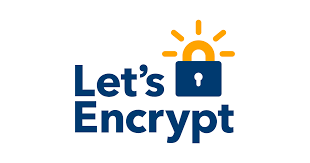Secure Nginx with LetsEncrypt
So you have built a new website on WordPress by following our guide How to Install WordPress and Nginx on Debian 12 and it is HTTP only. Now we can update the security to HTTPS with LetsEncrpypt. The process is much simpler than it was a few years ago.
Lets Encrypt is a Certificate Authority that provides a really easy way to obtain install free SSL certificates to enable you to run HTTPS on your webserver. It will also work with Apache, but the guide here is for using nginx on debian.
Backup Site config
Before making changes to your sites config always a good idea to backup the config. You should have automated backups but if not grab a quick tarball of /etc on your host
tar -xcvf etc-backup.tar.gz /etchttps://www.digitalocean.com/community/tutorials/how-to-secure-nginx-with-let-s-encrypt-on-debian-10
Step 1: Software installation
This guide is tested on Debian 12, and should work exactly the same on Ubuntu and other Debian derivatives. Before adding new packages make sure your installation is up to date
sudo apt update && sudo apt upgradeInstall the required packages
sudo apt install python3-acme python3-certbot python3-mock python3-openssl python3-pkg-resources python3-pyparsing python3-zope.interface python3-certbot-nginxStep 2: Execute the LetsEncrypt script against your domain
change the code to reflect your domains
certbot --nginx -d yourwebsitefuturereboot2.com -d www.yourwebsitefuturereboot2.comwait for the script to do its work.
Step 3: Verify the Configuration
Take a look inside the nginx config file for the changes made. Within your config file /etc/nginx/conf.d/yourwebsitefuturereboot2.conf you can now see we are listening on port 443 for HTTPS and details of the certificates location along with other changes
listen 443 ssl; # managed by Certbot
ssl_certificate /etc/letsencrypt/live/yourwebsitefuturereboot2.com/fullchain.pem; # managed by Certbot
ssl_certificate_key /etc/letsencrypt/live/yourwebsitefuturereboot2.com/privkey.pem; # managed by CertbotAlso have a peek at /etc/cron.d/certbot and you should find an entry similar to the following to ensure the certificates are replaced before they expire.
0 */12 * * * root test -x /usr/bin/certbot -a ! -d /run/systemd/system && perl -e 'sleep int(rand(43200))' && certbot -q renew --no-random-sleep-on-renew
And thats it. Test out browsing your site with HTTPS!
Summary
In this tutorial, we install Lets Encrypt client called certbot then downloaded the SSL certificates for your domain and automatically configured nginx to use these certificates. and best of all, automatic renewal is also setup too.


Pingback: How to Migrate a WordPress Website using Command Line – Future Reboot